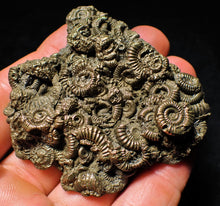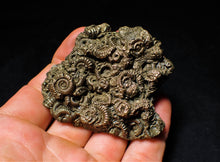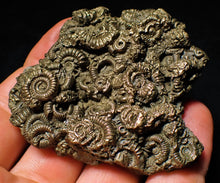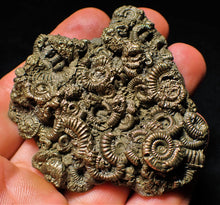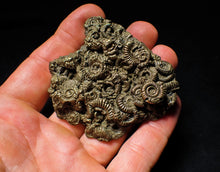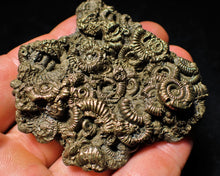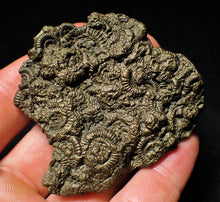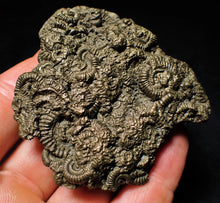
A stunning and large example of a highly pyritised multi-ammonite fossil containing the species Crucilobiceras densinodulum from the world famous Jurassic Coast beach of Charmouth, Dorset UK.
The fossil measures 64 mm (2.55 inches) across with matrix which is very large for this type of fossil. The pyrite matrix is full of ammonite shells which all accumulated together on the seafloor in the Early Jurassic. This is one of the fullest pyrite multi-ammonite fossils we have ever seen; there are dozens of shells compacted together making up the entire matrix. The ammonites are very well preserved with great detail and the whole piece has a wonderful pyritic colour and shine. These beautiful fossils are getting much harder to find. A really unique piece.
These multi-ammonite assemblages (or 'death beds') occur when lots of shells came together on the seafloor before being fossilised together, often collecting around an obstacle in the mud like a piece of wood or larger shell. They are a beautiful snapshot of life (and death) on the seafloor almost 200 million years ago.
Around 196 million years old, this fossil would make a wonderful addition to any collection.








